If you were ever able to watch one of the many videos available, of a mammal released to freedom after having been confined, or maybe if you just observed your dog having fun on one of your regular walks, there was one common thing that you likely recognised: their joy of movement, their joy of sheer embodied presence in the three-dimensional natural world. The joy of movement is something they are wired for. And I want to argue that the joy of movement is also something that we, humans, are wired for.
Those animals we watched on videos might have never even seen the daylight and green grasses before, but once there, they are quick to »synch« to that, to recognize their freedom. Movement is something written in our genes and bodies. It is a crucial part of our ecology as living organisms and is present in the three-dimensional world.
However, the way most of us live today- sedentary jobs, long working hours, chronic stress – is not the way of life that we are wired for. For thousands of years, what has been defining and shaping us as Homo Sapiens has been hunting and food gathering, meaning a lot of movement and constant contact with the nature. Our ancestors’ lives might have been rather stressful occasionally, but that stress was acute, not chronic. I don’t want to romanticise that long era in human history. Let’s just say that today, we live and work within different boundaries which do not necessarily suit our primal ecology. But since these are our givens, we need to learn to operate within them in the best possible way.
You likely know that this division of mind and body was something Rene Descartes came up with, and that it is a typical division present in the so called Western world. Outside of it, humans don’t draw this line and I probably don’t even have to mention that animals know nothing about it. I believe that it is crucial, for our ecology and well-being, to get over this divide, start reflecting our own attitudes towards our bodies, and mindfully engage in creating self-care habits and rituals.
Today, I am going to focus on four elements, which are, more or less, auxiliary to our main working mission of being there for women who experience violence. But they can add impressively to the quality of our every-day life, when engaged thoughtfully. Since I am no authority in this field, I am only sharing my experience, while strongly advising you to talk to a professional before engaging in anything that you are uncertain of, or have insufficient knowledge about.
These four elements are:
1. movement
2. nutrition
3. stress management
4. work efficiency
1. MOVEMENT
In the domain of movement, try to move your joints around regularly. Stretch them but also try to make them stronger in the end-range positions.
If your work is sedentary, give some special love to your shoulder and scapula. Maintain the mobility of these with regularly doing slow big circles with each of your arms, and try to initiate the movement in your scapula without rotating the torso in the hips. If possible, try to reach up and hold onto something with both your hands, then let the gravity pull you down, to stretch and open your shoulders and spine. There is no need to actually hang, your feet may as well stay on ground.
If you sit a lot, another area that will likely need attention are your hips and legs. Can you squat down, feet firmly touching the ground, and stay in that position for more than 15 or 20 seconds? If that is impossible or painful, don’t attempt to do it all of a sudden. Deep squats stretch the joints, muscles and tendons that are neglected while sitting.
Movement for better mobility can be performed in many ways – it can also be Feldenkreis, Tai-Chi, Wu-Shu or even dancing. Or a combination of any of these – it doesn’t have to have a name to suit us. The basics of our body maintenance is regularly moving around the joints in every possible direction. Pain should not be present during any of these movements, but if it is, stop immediately and try to find out why you feel the pain or discomfort with a help of a professional.
One more thing to consider – especially if you’re a woman – is adding resistance training to your movement routine. I believe that many of you are aware that resistance training builds muscle (in women, the results will likely be visible as toned muscles), but it also helps strengthen the connective tissues – that is, tendons and ligaments, as well as bones via increased mineral deposits, since bones tend to get denser when resistance training is regularly incorporated into our routine.
Resistance training has also other benefits, and these are just a few of them: it reduces anxiety; it improves cellular health in older women; it also improves cognitive performance in elderly women.
Walking and some slow running, as endurance activities, may help us boost our immunity and make our cardio-vascular system stronger. Since they also engage our parasympathetic nervous system, they may help us sleep better, and may as well serve as our time to meditate, while in nature.
2. NUTRITION
In the domain of nutrition, there are a few typical mistakes you will want to avoid.
Never try to go on diet to lose weight when you are stressed, because low caloric intake is a stress in itself. Also, since many people tend to undereat on protein, it is crucial to emphasize that protein needs to be present in every meal that we eat, and would ideally amount for a quarter to a third of our daily caloric intake (on an 1800 kcal diet, that would be around 110-150 g of protein per day… many women hardly get above half of that).
A sound nutrition strategy would spread food sources widely and make food tasty, colourful, and an enjoyable experience. Unless you have a good medical reason for it, it is not advisable to exclude whole food groups from your nutrition.
Contrary to what we have been told for ages, older people do not need to deprive themselves of protein, since they are particularly in danger of losing good quality body mass, which is the muscles and the bones.
I have met people concerned with poisoning themselves with too much protein. It is likely impossible that with normal, colourful, wide-spread nutrition one would overeat on protein. Protein is very satiating as a food source and we will intuitively stop eating before we could even get close to having too much of it. Combine proteins from animal sources with those from plant sources to improve absorption of amino acids present in plants.
Do not wait until something goes wrong to opt for better food choices. Try to have 3-5 meals spread during the day, approximately at the same time every day. Make sure to include both a quality protein source and a fibre source to each of these meals. We are creatures of habit and a simple rule of having regular timing for eating can help us diminish stress levels at least a little.
3. STRESS MANAGEMENT
Deep, focused breathing, inhaling through the nose into the stomach, and exhaling through the mouth, works immediately. Do this for 3 minutes every time you need to relax.
Meditation can take different forms for different people. Some people like to move when meditating. This is called »productive mediation«. Whichever form your meditation takes, start with a short one, of no more than 5 minutes per day. Just make sure it is the same time every day, then stick to it.
It would be impossible to address stress management without mentioning quality of our sleep. Make sure your computer and telephone have an app for disabling the blue light as the night arrives. There are many apps available, try and see which one works for you. Also available are glasses which block blue light. Go to bed at the same time every day, and wake up at the same time.
Gentle stretching and especially compassionate touching may improve both your sleep and regeneration.
4. WORK EFFICIENCY
Perhaps you should start with tracking down your time spent online. Continuous online presence is one of the domains where we fail easily, so it can be a potentially great area to improve our behaviours.
We should try to keep clear boundaries between our work time and our free / family time. Even if you work long hours, longer than expected, do your best to close that folder when going home.
I know that some people schedule their time off social media or the internet in general. A different suggestion would be: do not schedule your time off – schedule your time ON social media. Schedule your time slots for checking your email. Perhaps diving into your emails should not be the first thing you want to do in the morning or when getting to work?
Schedule time slots for what Cal Newport called »the rhythmic philosophy of deep work scheduling«. The easiest way »to consistently start deep work sessions is to transform them into a simple regular habit. « (The title of the book is “Deep Work”, p. 71)
Deep work should be completely distraction-free, and can only be engaged for two or maximum three time slots of maximum 90 minutes, during one day. After each deep work session, have a long break, of an equal amount of time or more. We all have a limited amount of willpower and at the start, we first need to build it, the same way we strengthen our muscles.
Do not take breaks from distraction – take breaks from focus. When you first engage in a deep work session, expect to be bombarded with the desire to do anything but work deeply. You will want to check, once more, social media. The key is to resist distraction, even if that means that you find yourself sitting alone and with no outcome of your work. Because it will come, eventually.
Consider developing rituals around all new things you want to turn into habits, they will help you get in and out of your »working mindset«. These include:
– where you work and for how long,
– how you work once you start,
– how you support your work (like a good cup of coffee),
– developing a strict shut down ritual. This is very important, as there is a known ability of mind to keep incomplete tasks dominating our attention.
Combine working completely alone with not working alone, which would be sharing your thoughts and outcomes with the people you work with.
Be lazy and schedule boredom. Experiment and plan slots of time when you don’t allow yourself any kind of distraction. Just be with yourself and be bored.
In conclusion, animals know very well how to draw the line between their active and resting moments. I believe this is an old wisdom, present in nature. It may not be a magic trick, but it can help us draw the lines between what is and what is not important in our daily lives, which can help a lot when we need to take better care of ourselves. We could learn to master our own rhythm, schedule distractions and boredom, and improve our work efficiency in return. We could combine these with a few other rituals, which include meditation, time spent in nature, moving around our joints. Combine all of that with mindful nutrition, and see what happens in a month or two!
By Katarina Višnar, WAVE Campaigner
Photo by Jess Watters on Unsplash






